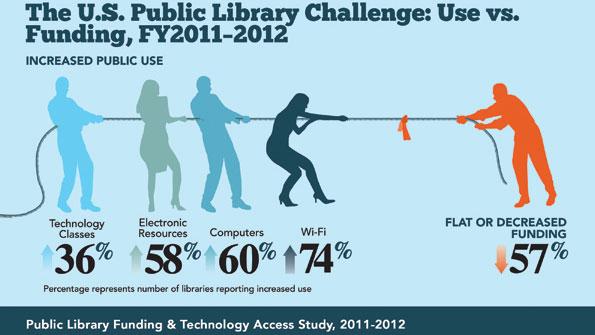Report: Libraries meet technology demands
Despite the effects of cumulative budget cuts, public libraries are finding ways to meet increasing demands for technology services and training, according to a new report, “2012 Public Library Funding & Technology Access Study.” The report, produced by the American Library Association (ALA) and funded by the Bill & Melinda Gates Foundation, says more Americans than ever turn to libraries for access to technology services, even as rural libraries fall behind urban libraries in providing those services.
Sixty-two percent of libraries in the survey report that they are the only provider of free computer and Internet access in their community. More than 60 percent of libraries report increased use of computers and Wi-Fi over the past year.
Not surprisingly, in the down economy, providing help to job seekers is a major part of libraries’ technology services. More than 92 percent of libraries provide access to job databases and other job resources, according to the report, and 76 percent help library patrons complete online job applications.
More than 90 percent of libraries offer some form of technology training, including computer skills and Internet instruction. A third of the libraries report increased registration for technology training over the previous year.
The report notes an “emerging digital divide” between libraries in urban areas and rural libraries, which account for almost 50 percent of all U.S. public libraries. Only 17 percent of rural libraries offer high-speed broadband connections, compared to 57 percent of urban libraries. Sixty-three percent of urban libraries offer technology training, compared to only 32 percent of rural libraries.
Many public libraries face fiscal challenges, with more than 57 percent reporting flat or decreased budgets for 2012. More than 40 percent of state libraries report decreased state funding. Public libraries “must operate during an era of increased demand with decreased revenue,” said ALA President Molly Raphael.




















